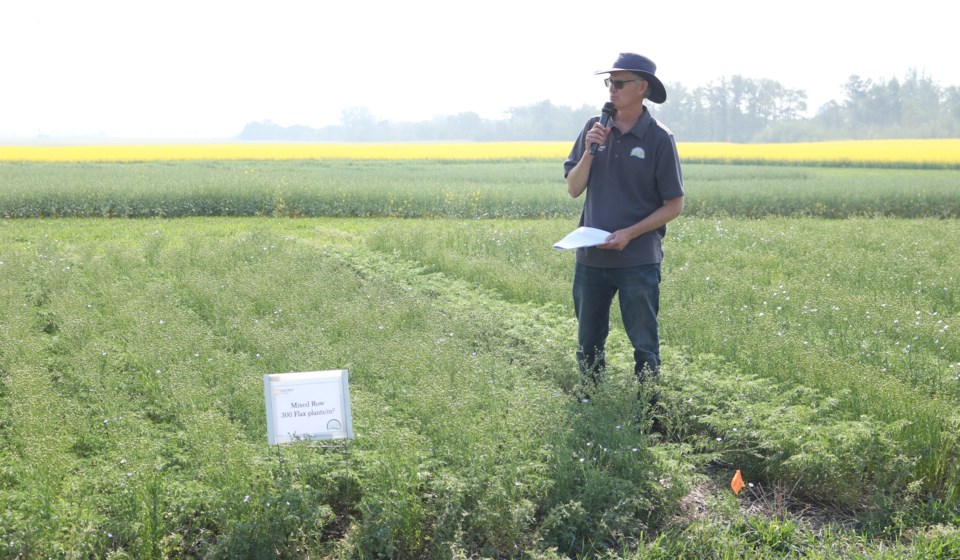YORKTON - Area farmers are always looking for broader cropping options, so there was definite interest in the chickpea plots during the Suncrest College and the East Central Research Foundation field day July 24.
While chickpeas have not traditionally grown well in the Yorkton region, there remains interest and this year at least the crop appears promising.
“Our chickpeas I think look great,” offered Greg Tomcala, Research Coordinator.
Tomcala said the plot work in Yorkton has a rather simple focus to “see if chickpeas are viable as a pulse crop here,” adding the crop “is not typical here in the black soil zone.”
The plots just south of the city have three varieties; CDC Orkney, CDC Pasquia, and CDC Lancer growing under various plot conditions in a set of trials being replicated at other sites in the province too.
Chickpeas are a crop which can be a bit ‘finicky’ in terms of best practices, noted Tomcala.
For example; “you want to plant them early, but you want warm soils,” he said, adding that combination is not always easy to achieve locally.
And the crop is not exactly like most pulse crops producers are familiar with being generally noted for ‘fixing’ nitrogen – a process where some plants convert or ‘fix’ nitrogen into a form organisms can use.
Chickpeas are not the best at that.
“They don’t fix a ton of nitrogen compared to other pulse crops,” said Tomcala.
Another issue with the crop is Ascochyta Blight which can affect all growth stages of the plant (seedling, vegetative, flowering, podding) and can cause lesions on all parts of the plant (leaves, stems, pods, developing seeds). As a result, yield loss can be devastating; over 70 per cent yield reduction can occur if the disease is not controlled, notes saskpulse.com
To alleviate some of the concerns there is interest in inter-seeding chickpeas and flax “to grow chickpeas more reliably in black soil zones,” said Mike Hall, research coordinator of the project.
The presence of the flax plants takes some of the pressure off the chickpeas in terms of the blight issue, he said of the benefit of growing the two crops in the same field.
Plots at the research site are looking into separate row seeding, and interspersed in the row options, as well how much flax might be optimal.
Of course growing two crops together does increase the challenge at harvest, but because chickpeas are large seeded, and flax small seeded, separation is reasonable.
Final plot results will be available after harvest.






